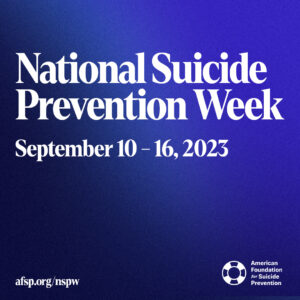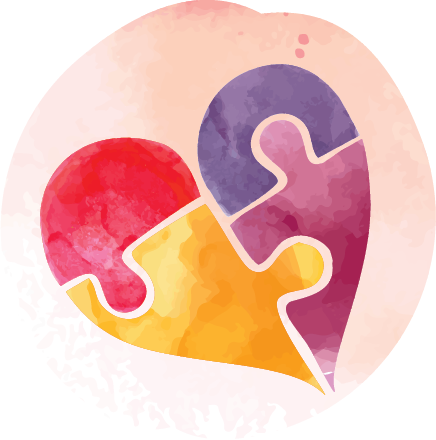Press











ABOUT Sam
SERVICES
Team Ruthless
EVENTS
GRIEFHAB™
PODCAST
RETREATS
shop
HEALING TOGETHER THROUGH THE HOLIDAYS - MAIN EVENT
HEALING TOGETHER - FOR A CAUSE: VIRTUALLY
HEALING TOGETHER - FOR A CAUSE: PILATES IN THE PARK - MICHIGAN
HEALING TOGETHER - FOR A CAUSE: VISIBLE - COLORADO
September 6-7
Jimtember Virtual Jubilee
blog
December 2nd - 8th / Metro Detroit AND VIRTUALLY
August 27th & 28th
August 30-31st
rUTHLESS IN THE ROCKIES
TEAM RUTHLESS
THE CONFIDENCE CONFERENCE
mOBILE rECOVERY dAY
Next event: September 10-23rd, Colorado
October 5-6th -
Virtual Event
September 30th, Castle Rock, Colorado
7 Groups Every week Plus Every Holiday
HEALING TOGETHER - FOR A CAUSE: Ride & ROAR - DALLAS
October 11 -12th
Stay Tuned!
FACES OF GRIEF
JOIN US
Suicide Prevention: We Can All Be a Part of the Change!
September 14, 2023
This week is National Suicide Prevention Week. This year’s campaign theme is ‘Talk Away the Dark.’ So let’s start a conversation about what we can all do to prevent suicide!
Most of us have been touched by suicide in some way. After all, it’s the 11th most common cause of death in the US today, according to the American Foundation for Suicide Prevention (AFSP). And it seems like the news has been full of reports of celebrities passing from suicide and mental illness in 2023 – Dancer and DJ tWitch, Naomi Judd, and Coco Lee (who sang ‘Reflection’ in Mulan) are just a few whose families have shared their mental health struggles after their passing. So how can we work to lower the rate of suicide?
Before we can get to prevention, we need to better understand what causes suicide. Organizations like the AFSP and the CDC have compiled lists of the most common risk factors, warning signs, and protective factors to help us better understand the root of the issue.
Risk Factors for Suicide
One of the most common risk factors for suicide is mental health. If a person has a history of mental health struggles – including depression, anxiety, or disorders like bipolar or schizophrenia – they are at a much higher risk of suicidal thoughts. While a personal history of mental illness is the most obvious facet of this, family history should also be considered.
Other ‘individual risk factors’ include:
- Chronic illness
- Chronic pain
- Financial or career trouble
- Aggressive, impulsive, or reactive personality traits
- Substance use
- Childhood trauma
- Traumatic brain injury
‘Relationship risk factors’ for suicide can include anything from family relationships to coworker relationships. If a person is experiencing bullying, shunning, or constant conflicts at work or school, that will lead to an increased risk of suicide. Family conflict, breakups, abusive partners, or the passing of a loved one are also risk factors.
Most of the other common risk factors for suicide can be sorted into the overlapping categories of community risk factors, societal risk factors, and environmental risk factors. For example, limited or nonexistent access to healthcare is both a community and societal issue. Out of 1.7 million suicide attempts in 2021, just over 48,000 were successful. But access to lethal means, such as drugs or firearms, increases the likelihood of a fatal suicide attempt.
Other community, societal, and environmental risk factors include:
- Prolonged exposure to a stressful environment or stressful circumstances
- Exposure to suicides in the community
- Community violence
- Stigmas around mental health and mental illness
- Social isolation
Now that we understand the most common risk factors associated with suicide, let’s talk about protective factors.
Protective Factors
What is a ‘protective factor’? We don’t hear the term as often. It is, essentially, the opposite of a risk factor. Anything in a person’s life that reduces their risk of suicide is considered a protective factor.
Access to mental health care and proactive mental health treatment options can protect against mental health risk factors. For someone with chronic pain, chronic illness, or other health issues, access to affordable healthcare is a protective factor. Effective coping skills and problem-solving skills help individuals to overcome the hopelessness that can set in due to circumstances like a lost job, debt, or a breakup.
A sense of connection and belonging within the community protects against risk factors like isolation and loneliness. Support from family, friends, or a romantic partner can fulfill the ‘relationship’ facet of protective factors. And cultural or religious beliefs help some individuals seek alternative solutions to suicide.
Warning Signs of Suicide
A suicide attempt typically doesn’t come out of nowhere. But the warning signs aren’t always easy to see if you don’t know how to identify them.
Sudden changes in mood are a major warning sign of suicidal thoughts. If someone you know suddenly exhibits signs of depression, anxiety, anger, irritability, or a loss of interest, they may be experiencing the hopelessness associated with suicide. However, sometimes the mood change can appear positive. Some individuals exhibit an uncharacteristic ‘happiness,’ relief, sometimes similar to a manic episode.
Behavioral changes to look out for often include self-isolation and voluntarily withdrawing from typical activities. Aggression and fatigue are common, and you may notice a significant change in sleeping patterns – either sleeping in excess or hardly at all. Some individuals begin calling or visiting people, especially people they haven’t seen in a long time. They may see this as a chance to ‘say goodbye’ or leave their friends and family with one last good memory. These visits may be accompanied by giving gifts, especially prized personal possessions.
Some individuals contemplating suicide begin to talk about what they’re feeling or thinking – either in person or online. They may mention feeling stuck, hopeless, or trapped. Some people express feeling like they are a burden to their family and friends. They may say that they feel like they have no reason to live, or explicitly say that they want to die. In some cases, they may talk about specific plans or methods. People who talk openly about these thoughts are often dismissed as ‘seeking attention,’ when in reality they are usually searching for a reason to keep living.
When in doubt, take all of this seriously. Because this could be your friend going through the everyday emotional roller coaster of life.
Or this could be your friend, desperately letting you know – the only way they know how – that things aren’t ok!
What Can You Do to Prevent Suicide?


We can all play a small part in reducing and preventing suicide. The AFSP’s Suicide Prevention Week theme this year is ‘Talk Away the Dark,’ and that’s exactly where we should start. The more we talk about issues like mental health, loneliness, debt, substance use, and other risk factors, the less stigma they have. When people don’t feel shame in talking about these issues, they’re more likely and more able to reach out for help. Even simply talking about suicide itself can help destigmatize it and show the people around you that you are someone who cares.
Lastly, make sure you know what to do when you recognize the warning signs, or when someone tells you that they are having suicidal thoughts. The AFSP has a fantastic, accessible guide to walk you through these conversations. If someone is in immediate danger, call 988 to connect with the national Suicide & Crisis Line.
If you or someone you know are experiencing a mental health crisis, call 988 or text TALK or AYUDA to 741741.
And remember, you can reach out anytime: sam@samantharuth.com
P.S.
Have you cast your vote for the Best of NoCo 2023? Voting ends tomorrow! Vote for Griefhab and The Be Ruthless Show to help me get the word out!


Leave a Reply Cancel reply
120 E. Front St. Loft 2 Traverse City MI 49684 &
77 Monroe Center St Ste 600 Grand Rapids MI 49503
phone : +1 (231)707-0707


Donate TO GRIEFHAB™
Donate today to help make our events and services free for everyone.
You can also donate directly to support a specific client in need.
four
three
info & Investment
two
THE FOUNDER
one
fIVE
GRAB A COPY OF MY
BOOKS & MERCHANDISE
four
three
info & Investment
two
THE FOUNDER
one


fIVE
GRAB A COPY OF MY
BOOKS & MERCHANDISE










HEALING TOGETHER EVENT
EVENTS
four
three
info & Investment
two
THE FOUNDER
one
fIVE
GRAB A COPY OF MY
BOOKS & MERCHANDISE
four
three
info & Investment
two
THE FOUNDER
one





fIVE
GRAB A COPY OF MY
BOOKS & MERCHANDISE










FACEBOOK FAMILY
GRIEFHAB™ SERVICES
FACES OF GRIEF
Our Press Features
THE BE RUTHLESS SHOW
two
three
Recent Articles
one





Coming in September! Stay Tuned.
December 2nd -8th / Metro Detroit AND VIRTUALLY
August 25th
August 30-31st
October 11 -12th
Stay Tuned!










four
three
info & Investment
two
THE FOUNDER
one





fIVE
GRAB A COPY OF MY
BOOKS & MERCHANDISE
four
three
info & Investment
two
THE FOUNDER
one





fIVE
GRAB A COPY OF MY
BOOKS & MERCHANDISE









